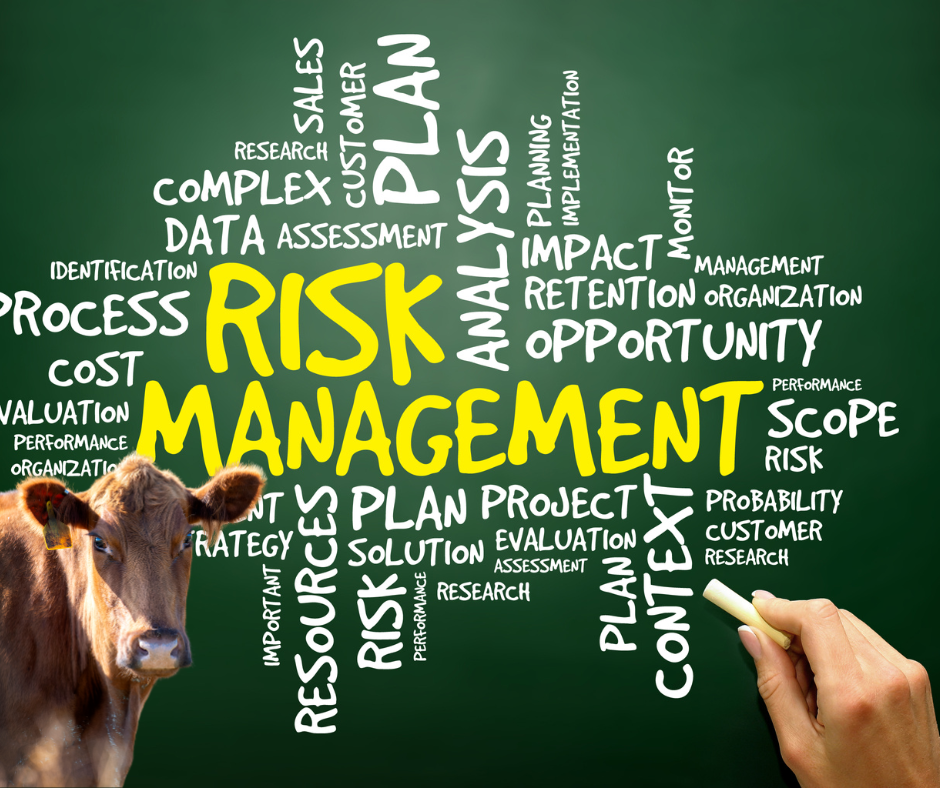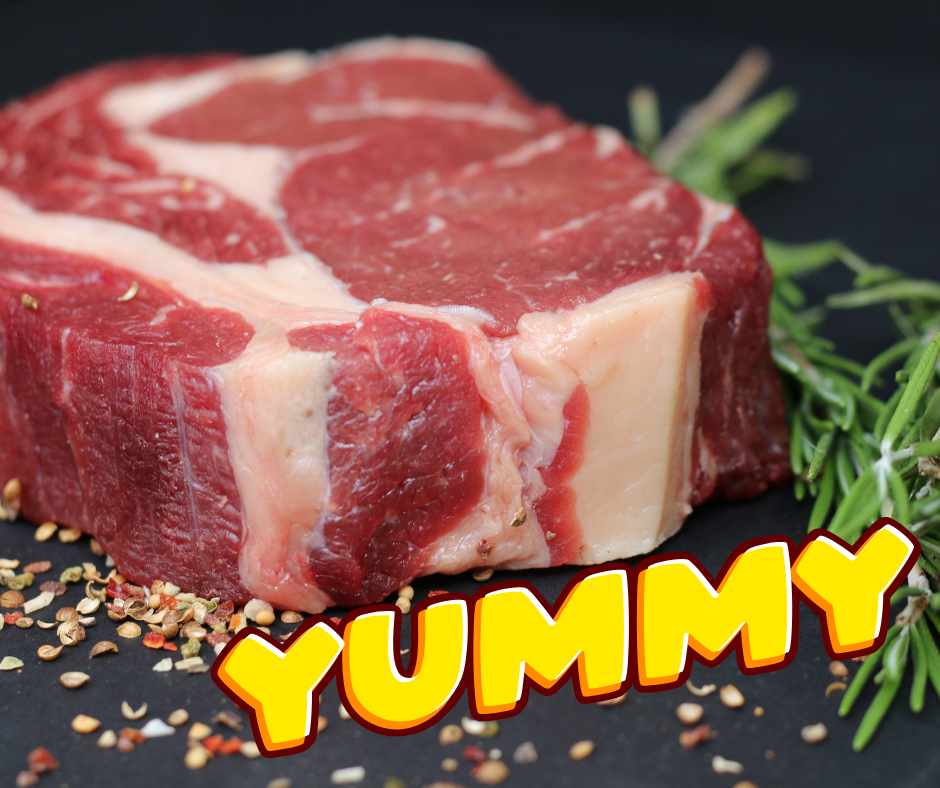No Bull: How Livestock Risk Protection Keeps Your Cattle Covered

You Know How The Cycle Goes
You calve in the winter, pasture in the spring and summer, and sell in the fall hoping that you’re going to get a good price. Recently the prices may have been good, but you know better than anyone, that can change.
If you have ever been concerned about the price you’re going to get for your livestock come sales time, you might want to consider Livestock Risk Protection (LRP) and the more you know about it, the better.
What is Livestock Risk Protection (LRP)?

What is Livestock Risk Protection (LRP)?
Livestock Risk Protection is a federally subsidized risk management tool for Ranchers to help offset revenue loss due to volatility in the futures market
What LRP does: It protects against an unexpected decline in the futures market price for cattle
That’s important because LRP can help keep your operation running smoothly when cattle prices aren’t aligning with your plans.
Livestock Risk Protection versus Futures Contracts

Consider the Options
You already know that many ranchers will use the futures market as a hedge against market volatility.
While the futures market approach does provide a safety net, it’s not without its limitations like contract size, margin calls, basis risk, the complexity and knowledge base required, and opportunity costs when locked into a predetermined price
None of these concerns apply when you consider an alternative like the LRP insurance product.
LRP gives you protection at a cost effective price.
LRP is a federally subsidized insurance product with a subsidy that ranges between 35% to 55% of the total premium.
The benefit is that you get to sleep at night rather than worry about what might happen in the future because:
- LRP allows coverage for as few as one head of cattle, making it accessible to operations of all sizes.
- Risk basis is significantly reduced
- LRP is generally less complex than futures trading, requiring less market knowledge and active management.
- While providing downside protection, LRP allows producers to benefit from price increases, unlike futures contracts which lock in a predetermined price
- LRP premiums are due after the coverage period ends, typically when cattle are sold, aligning costs with cash flow and reducing upfront expenses
The choice between futures market and Livestock Risk Protection (LRP) depends on the specific needs and circumstances of the producer. However, LRP generally offers several advantages that make it a better option for many cattle producers, especially smaller operations.
How LRP Works

Something to Know
LRP insurance is administered by the USDA’s Risk Management Agency (RMA) through the Federal Crop Insurance Corporation (FCIC) which is a wholly owned government corporation
The FCIC acts as an insurance company for private insurance companies and contracts with private insurance companies to sell the FCIC policies
The Livestock Risk Protection policy is one of those policies
Livestock Risk Protection is straightforward but, you do have to qualify for it.
This means that you have to be eligible to participate in federal programs to get the insurance
You will need to file a one-time application the primary purpose of which is to establish your eligibility and the application will need to be accepted and approved by the RMA
Once you have been determined eligible, you can attach insurance coverage for your cattle through a specific coverage endorsement throughout the year.
What you need to know is that it is a two-step process and, although not mandatory, the insurance companies will typically want the application at least 30 days prior to submitting a specific coverage endorsement
You will need to complete the Form-1026 (Highly Erodible Land Conservation and Wetland Conservation Certification) with your local Farm Service Agency (FSA)
It is important that the information you give to the FSA exactly matches the information that you give to the RMA. They are both USDA agencies and they talk to each other
If the Form-1026 is not on file you will not receive the subsidy
When you complete Form-1026 you will be expected to abide by the terms and conditions incorporated in the form
Availability

Can I Get one?
LRP policies are available in all counties in all states for a person or entity that has an insurable interest in the cattle
Sales of LRP policies are Time Sensitive. LRP policies are offered for sale daily Monday through Friday, except on certain days
The sales window for the policy endorsement is from approximately 3 PM MT to 7:25 MT the following morning (includes Saturday morning for Friday sales)
The timing allows the RMA to use that day’s closing futures prices to calculate the Expected Ending Values (EEV) and coverage prices for LRP policies
Generally, the days that policies are not available for sales include the following:
- Weekends (Saturday afternoon and Sunday)
- Federal holidays
- Days when the Chicago Mercantile Exchange (CME) is closed
- The third Friday of each month when the USDA releases the Cattle on Feed report
- In the event of a limit movement in any relevant livestock futures
The Specific Coverage Endorsement

This is Where the Meat is!
When you are ready to submit a specific coverage endorsement (SCE) you will need to do a few things
The first thing that you are going to need to do is select a coverage level
The coverage level you select represents a percentage of the projected livestock price at the end of the insurance period.
The projected livestock price, also known as the Expected Ending Value (EEV), is derived from the Chicago Mercantile Exchange (CME) feeder or fed cattle contracts and serves as the basis for calculating coverage prices and premium rates
The projected livestock price changes daily
There are 12 coverage levels for LRP and each coverage level is associated with a specific subsidy level
The coverage level is inversely related to the subsidy meaning the higher the coverage level the less the subsidy. See the table below:
| Coverage Level | Federal Subsidy |
| 100% | 35% |
| 99% | 35% |
| 98% | 35% |
| 97% | 35% |
| 96% | 35% |
| 95% | 35% |
| 92.5% | 40% |
| 90% | 40% |
| 87.5% | 45% |
| 85% | 45% |
| 80% | 50% |
| 75% | 55% |
It is important to understand, not all coverage levels will necessarily be available on any given day.
The next step will be to determine the target weight at which you intend to sell your cattle
This is important to know because it determines the class of your cattle
For LRP, there are two possible classes, Feeder cattle and Fed cattle. You will be required to select one or the other
The weight ranges are as follows:
- Feeder cattle: 100 – 1000 lbs. or ( 1 – 10 cwt)
- Fed cattle: 1000 – 1,600 lbs. or (10 – 16 cwt)
The majority of operations in Eastern Montana are producing Feeder Cattle
If your target weight is in the Feeder cattle class, you will have an additional step
You must now select the type of feeder cattle that you plan to raise and sell
There are 5 available types to choose from:
- Steer
- Heifer
- Predominately Brahman
- Predominately Dairy
- Unborn: (Has three subtypes)
Once you select the type of Feeder Cattle you will need to declare where your target weight is within the possible weight range for Feeder Cattle
It is easy to do because you already know your target weight and there are only two options:
- Feeder Weight 1: Between 100 – 599 lbs. or (1 – 5.9 cwt)
- Feeder Weight 2: Between 600 – 1000 lbs. or (6 – 10 cwt)
The reason behind the extra step
The reasoning behind the further segmentation is because the CME futures market contracts are based on Steers weighing between 700 to 899 lbs. or 7 – 8.99 cwt.
This means adjustments will automatically be made to your policy to account for the inherent differences between your selections and the CME contract basis
Adjustments impact both the premium you pay and the indemnity you are paid
It is an attempt by the RMA to be fair and reasonable because you are effectively insuring the weight of your cattle against market volatility
Now you will need to determine how long it will take to get your cattle to the target weight
There are 10 available insurance periods that the RMA offers
The available insurance periods are 13, 17, 21, 26, 30, 34, 39, 43, 47, and 52-week periods
You will want to have the insurance period end as close to the time you sell your cattle as possible
If you dispose of your cattle more than 60 days prior to the end date listed on your policy you will not be considered to have insurance but you will still have to pay the premium
If you have disposed of your cattle more than 60 days after the end date listed on your policy then any indemnity will be reduced by the amount that would have been paid prior to the 60 day deadline
You will have to provide proof of sale prior to receiving an indemnity payment
The final step is to submit your specific coverage endorsement during the appropriate sales window
You will need to sign the request and so will your agent. Time can be an issue and your SCE can be signed up to 14 days prior to the effective date as long as all required information is included
If you sign early you will not know what the premium rate is, the coverage price, or the expected ending value as those values will only be available on the sales date
You may revise or withdraw the SCE at any time up to 12:30 PM Mountain Time on the effective date
The effective date is the date associated with the beginning of insurance for a Specific Coverage Endorsement and will always be the date the rates were published on RMA’s website
Now What?

Ever Heard the Expression, “Hurry Up and Wait”
LRP epitomizes the statement “Hurry Up and Wait” You go to doing what you do and get your cattle to the place you want them to be
After all that hard work you sell your cattle and hopefully you are getting a good price. But nobody can predict the future and we all know markets go up and they come down too
If the CME futures market for cattle goes in the downward direction you will be able to rest a little easier at night because you know you have taken the necessary steps to manage your risk
If the CME futures index on the end date of your policy falls below the expected end value an indemnity payment will be due
IT’s possible that the CME futures index may not correlate to the price you receive at your local market
It takes the RMA approximately 10 days to post the final futures index
After that, you can expect to hear from the insurance company. They will typically notify you within 30 days after the end date on your policy that an indemnity payment may be due
You will be provided with a claim form which you will need to complete and return to the insurance company with all of the necessary documentation
You have 60 days to complete and return the claim form
You can then expect to receive an indemnity payment from the insurance company within 30 days from the date the claim form was received by the insurance company
The No Bull Summary

LRP is Practical & Reliable
Livestock Risk Protection (LRP) is a practical and reliable option for ranchers who want to manage the financial risk of their operation
If you’re running a small operation or a big spread, LRP lets you choose coverage that fits your specific needs
You can choose coverage levels that match your operation’s size and risk tolerance, with federal subsidies helping to offset the cost
When sale time comes, if the market takes a nosedive, LRP has your back, potentially putting some extra cash in your pocket to help offset losses that you don’t want
It’s not about gambling on future prices; it’s about having a straightforward risk management strategy to effectively manage market volatility and in ranching, that’s about as close to peace of mind as you can get.
Armor Insurance Agency

If you liked this article you can find more here
Want to discover more about what LRP can offer you?
Call: (406) 416-1096
We are an equal opportunity provider


Leave a Reply